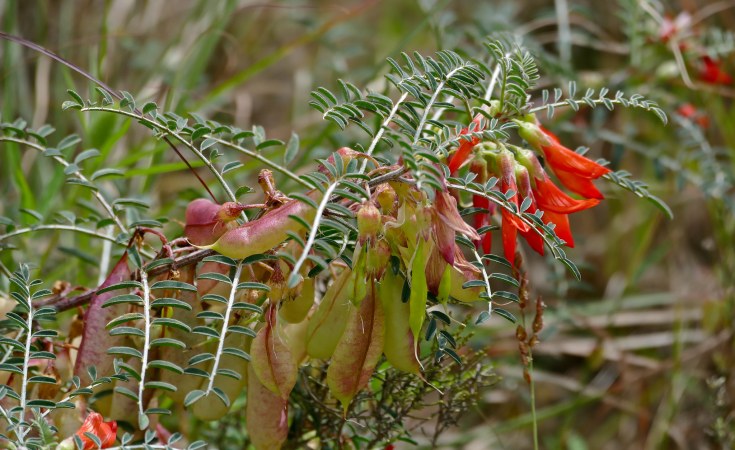A cow horn believed to be the oldest known example of a medicine container in southern Africa has been discovered in a South African cave. It sheds light on the herbal remedies used by indigenous healers more than 500 years ago, including one known as the "cancer bush".
The horn was discovered by South African hiker Rodger Smith when he was camping in the cave with his wife and daughter in the Eastern Cape province in 2020. An analysis of its contents has only just been published in the South African Journal of Science.
Radiocarbon dating of a sample of the leather-capped horn places it in use anywhere between 1461-1630, said Justin Bradfield, an archaeologist at the University of Johannesburg's Palaeo-Research Institute and the lead author of the study.
"It's the first example that we have in southern Africa of tangible evidence that people were mixing different ingredients together to create a medicinal recipe," he explained.
"It shows us that people 500 years ago did have a pharmacopeia. They had, within their knowledge systems, knowledge about medicinal compounds and the effects of using certain plants."
The horn's owner could have been from the Khoi, a pastoral community that herded cattle and sheep, or the San, who were hunter-gatherers.
Both communities lived in the Eastern Cape at the time.
A generic medicine
Chemical analysis of the dried and crusty remnants of ointment inside the horn were found to include various plant compounds consistent with those known to treat fevers and infections: mono-methyl inositol and lupeol.
These are found in local plants, among them the Namaqua rock fig, the butterfly pea and the cancer bush.
The latter is a shrub also known as the balloon pea because of its inflated pods.
It has long been reputed to be an effective cancer remedy, though this has not been proven and research continues into the exact nature of its healing properties.
The bush, which is known to scientists as Lessertia frutescens, also has strong antioxidant properties and was used by the Khoi for washing wounds and treating fevers and eye infections, the study notes.
The pharmacological effects of the compounds the research team found in the horn point to a generic medicine used to treat a wide range of different ailments, some of which people suffer from today, Bradfield told RFI.
"They can be used to control blood sugar, cholesterol levels, to treat infections and things like that," he said. "One of the compounds is very good for treating inflammation."
When the horn was retrieved in 2020 by the hiking group, it had been exposed by animal activity, probably wild antelope that had earlier taken shelter in the cave.
It was tightly wrapped in grass and the papery scales of a plant known as the poison bulb, and bound with rope made from plant fibre.
Poison bulb scales are known to have antiseptic and preservative properties, which is likely why the horn survived so long.
Treasured possession
"The way that the horn was wrapped, very delicately in very specific materials, suggests to us that this was a treasured possession, as I presume any medicine would be in those times," said Bradfield.
Why the owner did not come back for it is a matter for conjecture, he added.
"The person may have been attacked by a wild animal or killed by another person or suffered some injury that prevented them from returning and collecting that medicine horn."
It is not the first time a valuable object of historical significance has been found abandoned in South Africa.
In 1926, an entire bushman hunting kit - a bow, a quiver full of arrows and other equipment - was found balanced on a ledge in a cave in South Africa's Drakensberg mountains.
It is estimated it had been lying there for up to 40 years before it was discovered and taken to a museum.
The cave where the medicine horn was found, near the village of Misgund, was decorated with ancient rock art.
When Bradfield was given the horn to examine, he thought it might contain pigment used by the ancient cave artists.
But the chemical analysis done by his team proved that everything the horn had contained had known medicinal properties.
In the 1800s, both San and Khoi communities believed in a mythical animal known as a water bull, "which bore a resemblance to domestic cattle and which was associated with, among other things, healing and whose horns were considered to have medicinal attributes", the study notes.


